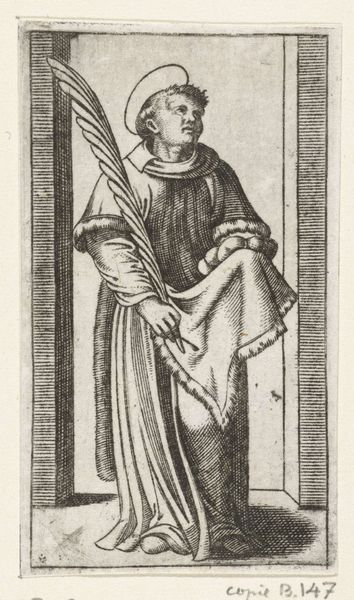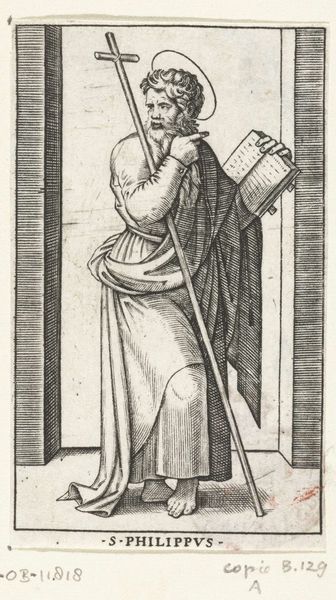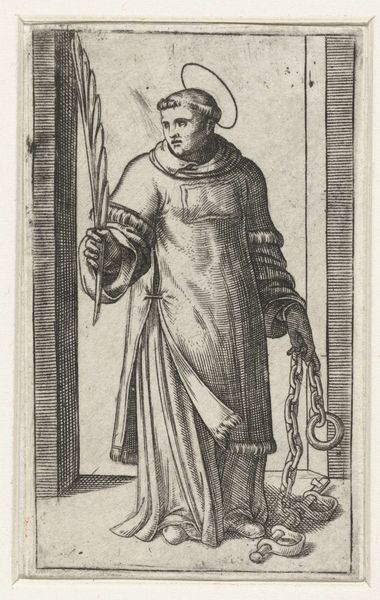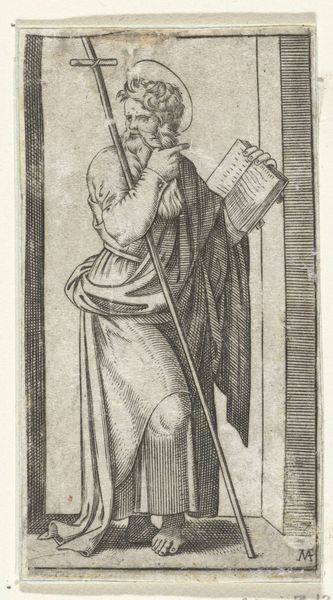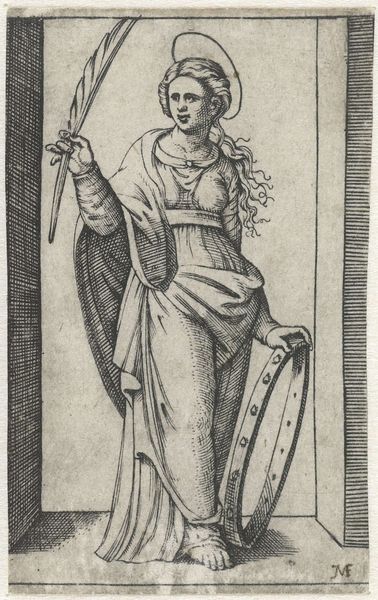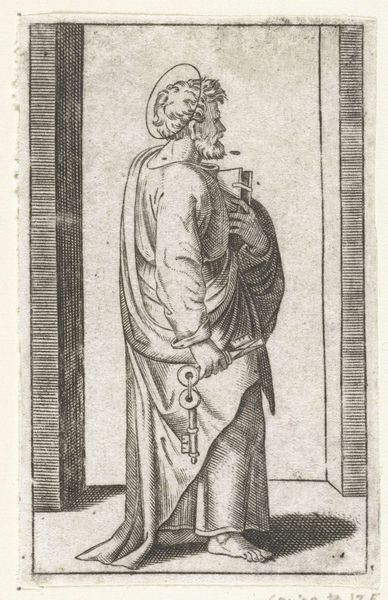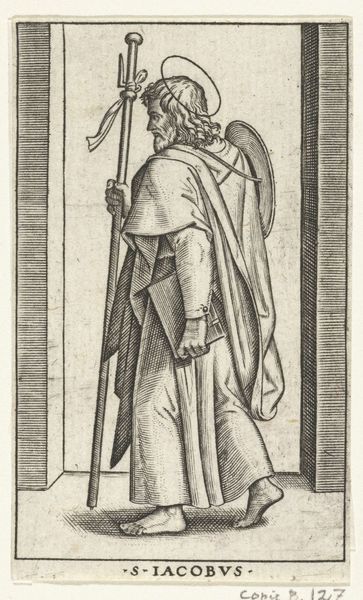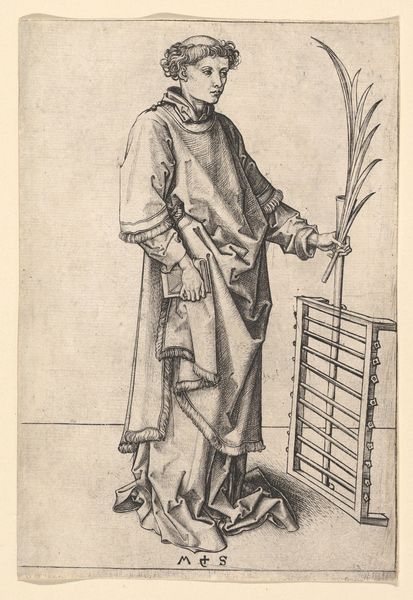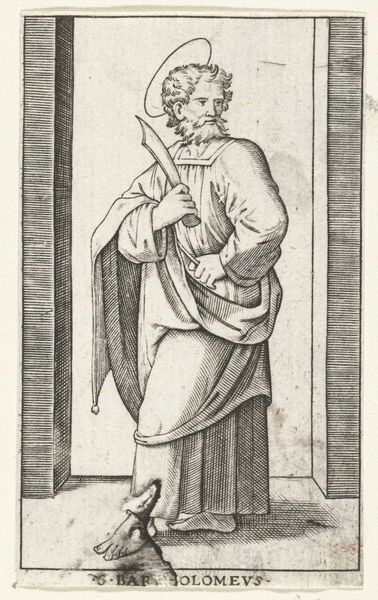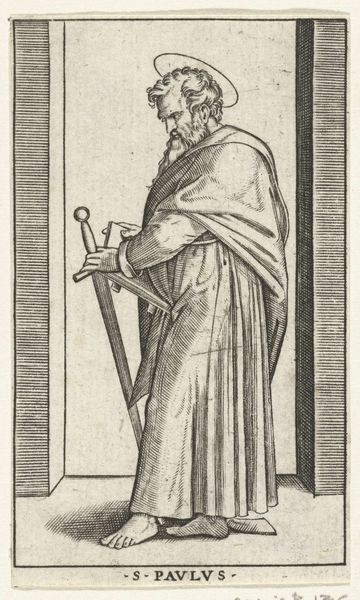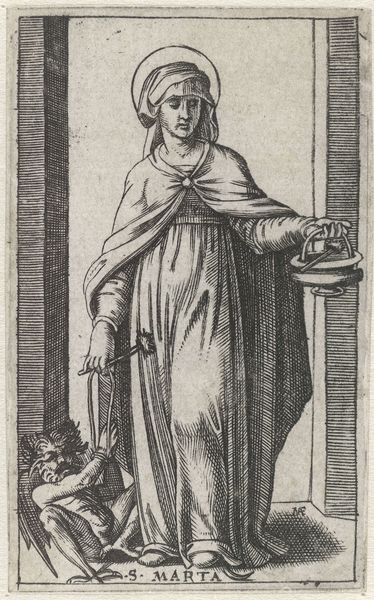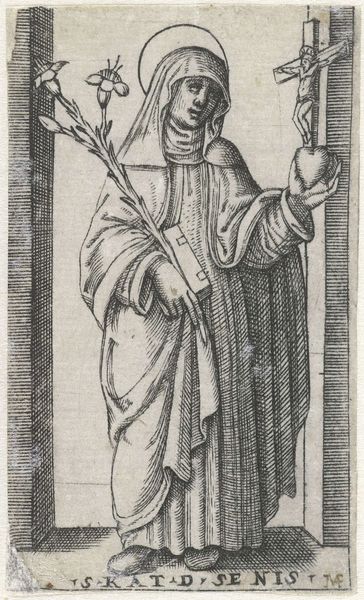
print, engraving
# print
#
old engraving style
#
figuration
#
11_renaissance
#
history-painting
#
engraving
Dimensions: height 84 mm, width 52 mm
Copyright: Rijks Museum: Open Domain
Curator: This is an engraving entitled "Heilige Laurentius als diaken met rooster," depicting Saint Lawrence as a deacon with a gridiron, likely dating between 1500 and 1575. It’s part of the Rijksmuseum’s collection. The piece is crafted through the print medium of engraving. Editor: My first impression is that this feels quite formal, austere even. The linear precision and limited tonal range of the engraving contribute to a somber, contemplative mood. The gridiron, so central to the saint's story, almost feels understated. Curator: Right, the choice of engraving speaks volumes. It's a reproducible medium, aligning with the period's expanding access to religious iconography and the democratisation of art. Engraving enabled the wider dissemination of the hagiography and served, in a sense, as popular propaganda for the church. We can discuss labor and distribution in printmaking at length! Editor: And situating Saint Lawrence, the historical figure, within the narratives of social justice--remembering he was martyred for his faith after distributing the Church’s wealth to the poor--this artwork operates within broader power dynamics, representing a call to address material inequality. How can the means of image production amplify this message or distort it? Curator: Exactly! Looking at the process, the very act of engraving is labour-intensive, the craft of creating the matrix… each line etched deliberately. The artist's skill lies in modulating tone and texture through sheer mark-making; that demands technical training and time to achieve the image's crispness, even if done by anonymous hands. Editor: We need to consider too how, through history, representations like these reinforce or challenge established views on religion and charity, not merely the saint's biography. Were those consuming this art able to empathize or question their own stances towards issues around privilege and societal duties? Curator: I wonder too, with the availability and dissemination facilitated by printmaking: did that consumption alter notions around sacred artworks and how they functioned within private or public devotion? And what happens when a revered artifact gets mass-produced? Editor: Ultimately, it serves to remind us that these historical artworks existed not in isolation. Their meaning has constantly shifted, interpreted and re-evaluated as we learn to dissect underlying sociopolitical narratives. Curator: Agreed, examining these engravings through the lens of their production opens a door for reassessing the role materials and skills had in image formation. A doorway to further understand artistic creation as it navigates across faith and culture!
Comments
No comments
Be the first to comment and join the conversation on the ultimate creative platform.

